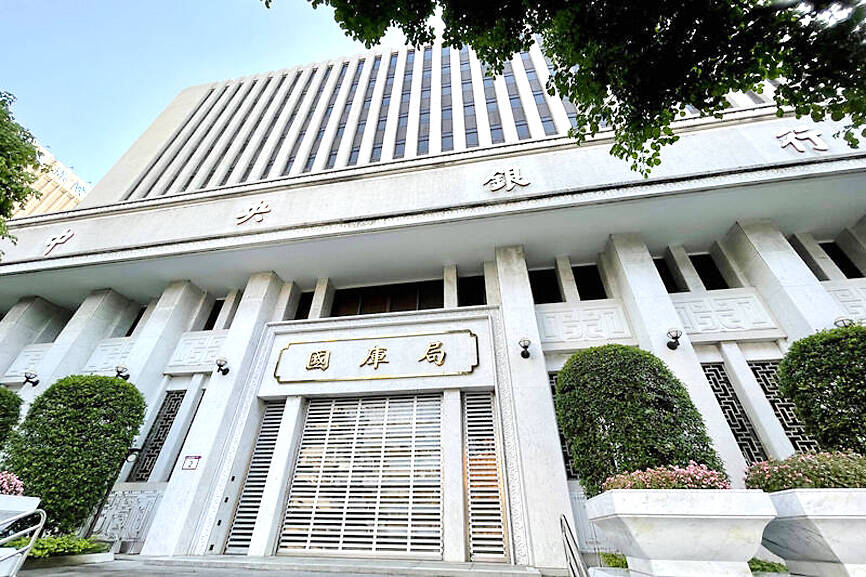The nation’s balance of payments last quarter registered a current account surplus of US$27.22 billion, widening from US$22.24 billion three months earlier, as imports fell faster than exports, although both declined, the central bank said yesterday.
The current account surplus grew US$5.17 billion during the June-to-September period, when trade surpluses reached a new high of US$30.11 billion, central bank research official Tsao Ti-jen (曹體仁) told an online news conference.
The showings had little to do with strong exports, which remained in negative territory, as did imports, Tsao said.

Photo: George Tsorng, Taipei Times
Rather, imports tumbled faster than exports amid sharp price corrections in oil and raw material prices, giving Taiwan trade surpluses. Poor imports also had to do with local firms’ conservative approach to inventory management, he said.
At the same time, the services account booked a deficit of US$4.4 billion, accelerating from US$3.29 billion a year earlier, as demand for local cargo shipping services shrank further, while outbound travel expenditures inflated, Tsao said.
Travel expenditures amounted to US$5.13 billion, while travel income stood at US$2.46 billion, driving travel deficits to a peak of US$2.67 billion, he said.
Outbound tourist visits appeared to have reclaimed pre-COVID-19 pandemic levels, but foreign tourist arrivals left room for improvement, Tsao said, adding that the gap would taper off as the world emerges further from COVID-19 disruptions.
Taiwanese hotels have said that visitors from Japan have evidently disappointed thus far, due mainly to a weak Japanese yen.
Foreign investment cooled to US$180 million, its lowest level since the first quarter of 2019, as global investors practiced caution amid lingering restrictive interest rates and economic uncertainty, Tsao said.
Outbound investment posted another record of US$6.09 billion, as local financial institutes and retail investors raised stakes in US bonds and other US dollar-based investment tools that generate higher yields, he said.

Hong Kong authorities ramped up sales of the local dollar as the greenback’s slide threatened the foreign-exchange peg. The Hong Kong Monetary Authority (HKMA) sold a record HK$60.5 billion (US$7.8 billion) of the city’s currency, according to an alert sent on its Bloomberg page yesterday in Asia, after it tested the upper end of its trading band. That added to the HK$56.1 billion of sales versus the greenback since Friday. The rapid intervention signals efforts from the city’s authorities to limit the local currency’s moves within its HK$7.75 to HK$7.85 per US dollar trading band. Heavy sales of the local dollar by

Taiwan Semiconductor Manufacturing Co’s (TSMC, 台積電) revenue jumped 48 percent last month, underscoring how electronics firms scrambled to acquire essential components before global tariffs took effect. The main chipmaker for Apple Inc and Nvidia Corp reported monthly sales of NT$349.6 billion (US$11.6 billion). That compares with the average analysts’ estimate for a 38 percent rise in second-quarter revenue. US President Donald Trump’s trade war is prompting economists to retool GDP forecasts worldwide, casting doubt over the outlook for everything from iPhone demand to computing and datacenter construction. However, TSMC — a barometer for global tech spending given its central role in the

The Financial Supervisory Commission (FSC) yesterday met with some of the nation’s largest insurance companies as a skyrocketing New Taiwan dollar piles pressure on their hundreds of billions of dollars in US bond investments. The commission has asked some life insurance firms, among the biggest Asian holders of US debt, to discuss how the rapidly strengthening NT dollar has impacted their operations, people familiar with the matter said. The meeting took place as the NT dollar jumped as much as 5 percent yesterday, its biggest intraday gain in more than three decades. The local currency surged as exporters rushed to

PRESSURE EXPECTED: The appreciation of the NT dollar reflected expectations that Washington would press Taiwan to boost its currency against the US dollar, dealers said Taiwan’s export-oriented semiconductor and auto part manufacturers are expecting their margins to be affected by large foreign exchange losses as the New Taiwan dollar continued to appreciate sharply against the US dollar yesterday. Among major semiconductor manufacturers, ASE Technology Holding Co (日月光), the world’s largest integrated circuit (IC) packaging and testing services provider, said that whenever the NT dollar rises NT$1 against the greenback, its gross margin is cut by about 1.5 percent. The NT dollar traded as strong as NT$29.59 per US dollar before trimming gains to close NT$0.919, or 2.96 percent, higher at NT$30.145 yesterday in Taipei trading